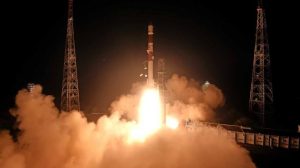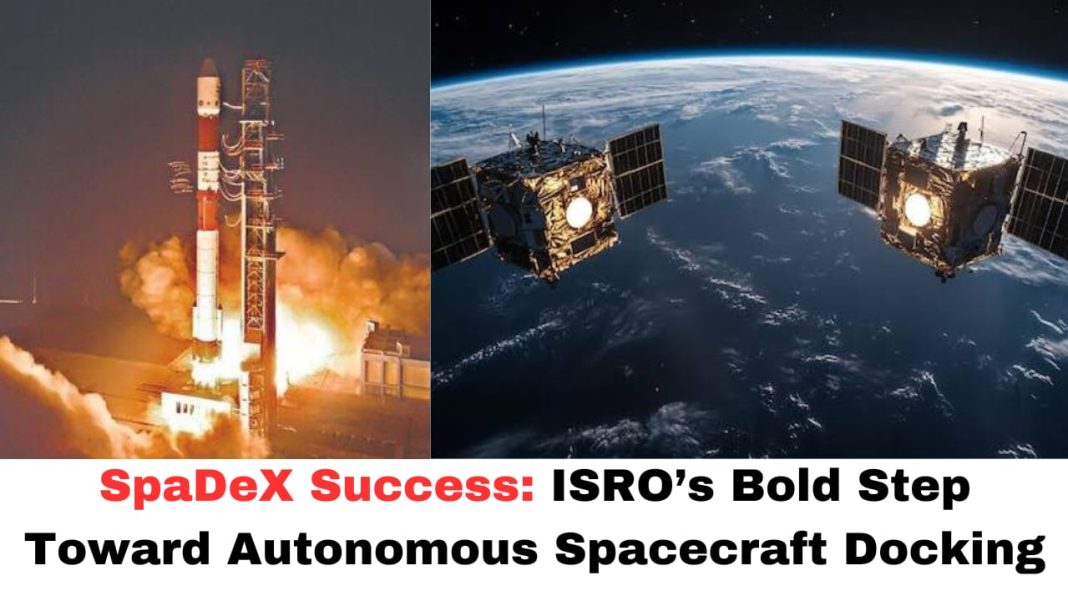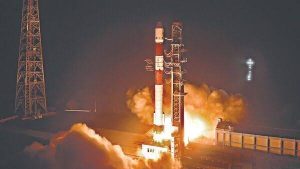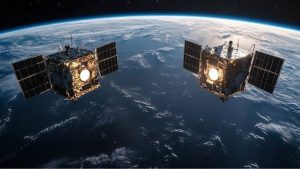Digital News Guru Techology Desk:
The Indian Space Research Organisation (ISRO) has achieved another groundbreaking milestone with the successful launch of the Space Docking Experiment (SpaDeX). This ambitious mission, launched aboard the Polar Satellite Launch Vehicle (PSLV-C60), aims to demonstrate India’s capabilities in autonomous in-space docking, a critical technology for advanced space exploration. With SpaDeX, ISRO solidifies its position among global leaders in space technology, paving the way for future projects such as satellite servicing, space station development, and interplanetary exploration.
Overview of the SpaDeX Mission
The SpaDeX mission, short for Space Docking Experiment, represents a critical leap for India’s space program. It involves two compact satellites—SDX01 (Chaser) and SDX02 (Target)—designed to execute precise maneuvers in low Earth orbit. These satellites are engineered to rendezvous, align, and dock autonomously, showcasing the advanced technologies ISRO has developed over the years.

Launch Details:
- Date: December 30, 2024
- Launch Vehicle: PSLV-C60
- Launch Site: Satish Dhawan Space Centre, Sriharikota
PSLV-C60, ISRO’s reliable launch vehicle, has been a cornerstone for India’s satellite deployment missions. With SpaDeX, it once again demonstrated its versatility and dependability in carrying critical payloads into space.
Objectives of SpaDeX
The SpaDeX mission is a technology demonstrator with multiple objectives that aim to advance India’s space capabilities. These include:
- Autonomous Rendezvous and Docking (ARD):
A critical aspect of modern space missions, ARD involves two spacecraft approaching each other, aligning precisely, and docking autonomously. This capability is essential for future missions such as assembling space stations, transferring crew between spacecraft, and interplanetary exploration. - Formation Flying:
SpaDeX will test the ability of two satellites to fly in a controlled formation, maintaining precise relative positions. This capability is crucial for satellite constellations, collaborative missions, and synchronized data collection for scientific research. - In-Space Satellite Servicing:
The experiment will lay the groundwork for technologies enabling in-orbit servicing of satellites, such as refueling, repairs, and upgrades. These advancements can extend the operational life of satellites, reducing costs and enhancing efficiency.
Technological Innovations
SpaDeX incorporates state-of-the-art technologies that position ISRO alongside elite space agencies like NASA, ESA, and Roscosmos. Key technological features include:
- Androgynous Peripheral Docking System (APDS):
A versatile docking mechanism that allows two spacecraft to connect with minimal impact force. The system ensures a gentle docking maneuver with an approach velocity as low as 10 mm/s. - Advanced Sensing Systems:
SpaDeX is equipped with high-precision sensors, including laser rangefinders and proximity sensors. These sensors enable accurate relative positioning and safe docking maneuvers. - Integrated Relative Orbit Determination Processor:
A cutting-edge processor using Global Navigation Satellite System (GNSS)-based technology for real-time orbit determination and navigation. - Autonomous Navigation and Control:
The mission relies on sophisticated algorithms to enable autonomous navigation, ensuring that the satellites can detect and respond to their environment without human intervention.
Significance of SpaDeX
The successful launch of SpaDeX marks a turning point in India’s space exploration journey. The mission is not just a technological demonstration but a strategic step toward realizing ISRO’s long-term goals. The significance of SpaDeX can be understood in several key areas:
- Precursor to India’s Space Station:
ISRO has ambitious plans to develop an independent space station by 2035. The technologies demonstrated by SpaDeX, particularly autonomous docking, are critical for assembling and operating such a station. - Enhanced Satellite Operations:
In-space docking can revolutionize satellite management by enabling on-orbit servicing. This includes extending the operational life of satellites through refueling, replacing outdated components, and repairing faults. - Global Space Collaboration:
By mastering docking technologies, ISRO becomes a more valuable partner for international collaborations. These capabilities are essential for joint missions involving modular spacecraft and orbital assembly. - Interplanetary Exploration:
Docking technologies are vital for deep-space missions, such as assembling spacecraft in orbit for lunar or Martian exploration. SpaDeX brings ISRO closer to achieving these ambitious goals. - Self-Reliance:
The mission underscores India’s growing self-reliance in space technology, reducing dependence on foreign expertise for critical space operations.
Challenges and Solutions
While the successful launch of SpaDeX is a testament to ISRO’s capabilities, achieving autonomous docking is fraught with challenges:
- Precision Navigation:
Docking requires extreme precision, often measured in millimeters. Any error in alignment or velocity can jeopardize the mission.
Solution: SpaDeX uses advanced sensing systems and GNSS-based navigation to ensure high accuracy.
- Autonomous Decision-Making:
The spacecraft must respond to unexpected situations, such as obstacles or misalignments, without human intervention.
Solution: ISRO developed sophisticated algorithms for real-time decision-making and control.
- Safety Concerns:
Docking involves risks, such as collision or damage to sensitive instruments.
Solution: Low-impact docking systems like APDS minimize the risk of damage.
Global Implications
With SpaDeX, India joins an exclusive club of nations capable of in-space docking. This achievement enhances India’s reputation as a leading space power and opens up new opportunities for international partnerships. Moreover, the technologies developed for SpaDeX have commercial potential, allowing ISRO to offer docking solutions to other countries and private space ventures.
Future Prospects
The success of SpaDeX is just the beginning of ISRO’s journey into advanced space operations. Future missions building on SpaDeX’s achievements include:
- Space Station Development:
Leveraging docking technologies for modular construction and crew transfers. - Chandrayaan-4:
Potential applications of autonomous docking for lunar exploration. - Satellite Constellations:
Using formation flying for coordinated data collection and communication networks. - Collaborative Missions:
Partnering with international agencies for large-scale space exploration projects.
Conclusion
The successful launch of SpaDeX is a historic achievement for ISRO and a testament to India’s growing prowess in space technology. By demonstrating autonomous in-space docking, ISRO has taken a significant step toward its ambitious goals of space station development, interplanetary missions, and global collaboration. SpaDeX not only advances India’s technological capabilities but also reinforces its position as a major player in the global space arena. As ISRO continues to push the boundaries of exploration, SpaDeX serves as a shining example of India’s potential to lead the future of space exploration.
You May Also Read: From Glory to Ruins: The Story of Nalanda University










